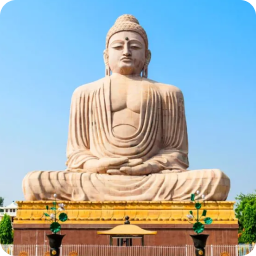Asia-Pacific Economic Cooperation (APEC) Overview
- The forum initially started as an informal dialogue of economic leaders in 1989 in Canberra, Australia to leverage the growing interdependence of the Asia-Pacific.
- It was formally established in 1993 with 12 members.
- Currently, APEC has 21 member economies of the Pacific Rim.
- India was invited to be an observer for the first time in November 2011. India is not in the grouping and has applied for membership.
Asia-Pacific Economic Cooperation (APEC) Member Countries
- The founding members of Asia-Pacific Economic Cooperation were Australia; Brunei Darussalam; Canada; Indonesia; Japan; Korea; Malaysia; New Zealand; the Philippines; Singapore; Thailand; and the United States.
- China; Hong Kong, China; and Chinese Taipei joined APEC in
- Mexico and Papua New Guinea joined in 1993.
- Chile acceded in 1994.
- And in 1998, Peru; Russia; and Viet Nam
Asia-Pacific Economic Cooperation (APEC) Goals and Objective
- The primary goal of APEC is to support sustainable economic growth and prosperity in the Asia-Pacific region.
- Objective –
- Promote free and open trade and investment
- Promote and accelerate regional economic integration
- Encourage economic and technical cooperation,
- Enhance human security,
- Facilitate a favorable and sustainable business environment.
|
Quick Facts of Asia-Pacific Economic Cooperation (APEC)
- The member countries collectively account for nearly 50% of the world’s trade and about 57% of world’s GDP.
- The creation of Asia-Pacific Economic Cooperation was primarily in response to the increasing interdependence of Asia-Pacific economies.
- Also, the proliferation of regional economic blocs, such as the European Union (EU) and the now defunct North American Free Trade Area (NAFTA), encouraged its formation.
- In 1994 during the Bogor, Indonesia summit, APEC set the Bogor Goals of “free and open trade and investment in the Asia-Pacific by 2010 for industrialized economies and 2020 for developing economies.”
| Bogor Goals
In 1994, Asia-Pacific Economic Cooperation Leaders committed to achieving the ‘Bogor Goals’ of free and open trade and investment by 2020 through reducing trade barriers in the region and promoting the free flow of goods, services and capital among Asia-Pacific Economic Cooperation economies. Since then, members have made measurable progress in achieving these goals. |
Asia-Pacific Economic Cooperation (APEC) Functions
- APEC works to help all residents of the Asia-Pacific participate in the growing economy.
- Asia-Pacific Economic Cooperation projects provide digital skills training for rural communities and help indigenous women export their products abroad.
- Recognizing the impacts of climate change, APEC members also implement initiatives to increase energy efficiency and promote sustainable management of forest and marine resources.
- The forum adapts to allow members to deal with important new challenges to the region’s economic well-being. This includes ensuring disaster resilience, planning for pandemics, and addressing terrorism.
Achievements of APEC
Growth and Development of the Region
- As a result of Asia-Pacific Economic Cooperation’s work, there has been a surge in growth in the region, with real GDP increasing from USD 19 trillion in 1989 to USD 42 trillion in 2015.
- Further, per capita income in the region rose by 74%
Promotion of regional economic integration and trade:
- The Asia-Pacific Economic Cooperation removed trade barriers between members, harmonized standards and regulations, and streamlined customs procedures which have enabled goods to move more easily across borders.
- To improve behind-the-border barriers to trade, Asia-Pacific Economic Cooperation has been working to foster transparency, competition and better functioning markets in the Asia-Pacific through regulatory reform, improving public sector and corporate governance, and strengthening the legal infrastructure.
- Average tariffs fell from 17% in 1989 to 5.2% in 2012.
- Asia-Pacific Economic Cooperation region’s total trade increased over seven times outpacing the rest of the world with two-thirds of this trade occurring between member economies.
Ease of Doing Business
- Asia-Pacific Economic Cooperation launched its Ease of Doing Action Plan in 2009 with an aim of making it cheaper, easier and faster to do business in the region.
- Between 2009 and 2015, member countries improved ease of doing business in the Asia-Pacific by 14.8% across all areas of the initiative
Initiatives for a cleaner environment
- APEC has been encouraging the development of clean technologies and greener growth across the region by lower tariffs on environmental goods.
- Asia-Pacific Economic Cooperation has helped urban planners develop low-carbon model town plans for a series of cities throughout the Asia-Pacific.
- These cities are reducing their carbon footprint by adopting a set of carbon emission reduction targets and energy efficient initiatives from solar panels to electric vehicles.
Inclusive growth
- Asia-Pacific Economic Cooperation has launched a wide variety of initiatives that have helped foster SME development in the Asia-Pacific region.
- In 2005, the Asia-Pacific Economic Cooperation SME Innovation Center was established in Korea to help improve the competitiveness of SMEs in the region through hands-on business consulting.
- In 2013, The Asia-Pacific Economic Cooperation Start-up Accelerator Network was launched to promote entrepreneurship and innovation by connecting technology start-ups with funding and mentors.
Asia-Pacific Economic Cooperation (APEC) Cooperation and Consensus
- APEC operates as a cooperative, multilateral economic and trade forum.
- Member economies participate on the basis of open dialogue and respect for views of all participants.
- In APEC, all economies have an equal say and decision-making is reached by consensus.
- There are no binding commitments or treaty obligations. Commitments are undertaken on a voluntary basis and capacity building projects help members implement Asia-Pacific Economic Cooperation initiatives.
- Asia-Pacific Economic Cooperation’s structure is based on both a “bottom-up” and “top-down”
- Four core committees and their respective working groups provide strategic policy recommendations to APEC Leaders and Ministers who annually set the vision for overarching goals and initiatives.
- The working groups are then tasked with implementing these initiatives through a variety of Asia-Pacific Economic Cooperation-funded projects.
- Members also take individual and collective actions to carry out APEC initiatives in their individual economies with the assistance of Asia-Pacific Economic Cooperation capacity building projects.
Issues and challenges of Asia-Pacific Economic Cooperation (APEC)
- Trade War– APEC members have conflicting aims and objectives towards world trade. Rising protectionism and US-China Trade war, threatens economic growth in the region. The 2018 Asia-Pacific Economic Cooperation Summit, to produce a joint communique because of tensions between the US and China over trade and security issues.
- Creation of Sub-Regional Agreements– Many Asia-Pacific Economic Cooperation economies seeking to reach sub-regional free trade agreements has a negative impact on the roles APEC was originally expected to play in the region. The negotiations over Trans-Pacific Partnership and Regional Comprehensive Economic Partnership (RCEP)had further undercut the importance of Asia-Pacific Economic Cooperation.
- Shrinking Economy due to Covid– The Asia-Pacific Economic Cooperation (APEC) region is expected to post a 7 per cent economic decline in 2020 due to the impact of Covid-19.
- Rising Unemployment– The region’s unemployment rate is projected to rise to 5.4 per cent in 2020 from 8 per cent in 2019, or an additional 23.5 million workers being unemployed in 2020.
India and APEC
- For several years, India has aspired to become a member of the Asian-Pacific Economic Cooperation Organisation (APEC).
- However, India’s request for becoming a formal member of the group, first made in 1993 and then in 2007 is yet to be accepted.
Why hasn’t India got membership in APEC ?
- India was denied APEC membership in 2007 on the ground that its economy was not integrated into the global system.
- Lack of consensus on including any new member
- Fears of disrupting consensus procedures
- Extra-regional status of India might undermine APEC’s geographic net beyond the Pacific Rim.
- large trade deficit of India
- APEC members do not view India’s politics and policies as supportive of wide regional integration and wider trade options.
Why does APEC need India ?
- India is the region’s third largest and now fastest growing major economy. APEC economies, which account for 60 percent of global GDP, are experiencing sluggish growth and must look for opportunities to bring new markets
- India is also projected to be the world’s third largest economy by 2030 and will need well over $1 trillion of investment in infrastructure over the next decade.
- With the Trans-Pacific Partnership (TPP) trade agreement becoming a reality APEC needs to reinvent itself.
- On the supply side, India’s labor force, which will be the largest in the world by 2030, will help offset the impact of aging populations and shrinking work forces in Asia-Pacific Economic Cooperation economies.
- India’s trade with APEC economies, which has grown rapidly over the last fifteen years, will grow further once it joins Asia-Pacific Economic Cooperation.
- A forward-looking commitment to India’s economic future is precisely the kind of bold initiative needed to boost stubbornly sluggish regional and global growth.
Advantages for India
- Membership in Asia-Pacific Economic Cooperation would allow India to negotiate trade, integrate with the global economy, and help boost growth.
- India’s inclusion in APEC will give a boost to its ‘Act East Policy’ and will further integrate the Indian economy into the Asia-Pacific economic milieu.
- Apart from facilitating greater regional economic integration, APEC promotes the development of small and medium enterprises in the member countries by removing hurdles for trading across borders.
- Asia-Pacific Economic Cooperation mechanisms and best practices will help Indian officials and businesses become more competitive and better prepared for the changing global economy.
- Inclusion of India in Asia-Pacific Economic Cooperation will act as catalyst for further economic reforms in the country.
Asia-Pacific Economic Cooperation (APEC): Way Forward
- The Asia-Pacific Economic Cooperation member countries should work together to ensure their collective and individual interests are best represented.
- At a time of global and regional geopolitical disturbances, Covid pandemic situation and domestic challenges, it is of immense importance to find wise solutions that are designed to promote sustainable and equitable growth and development according to the specific circumstances of the Asia-Pacific region.
- With the rise of India as one of the global economic powers and its changing regional economic and political influence, necessitates that India is included in APEC. This would ensure a free and open trade and investment in the Indo-Pacific region and foster growth.






























